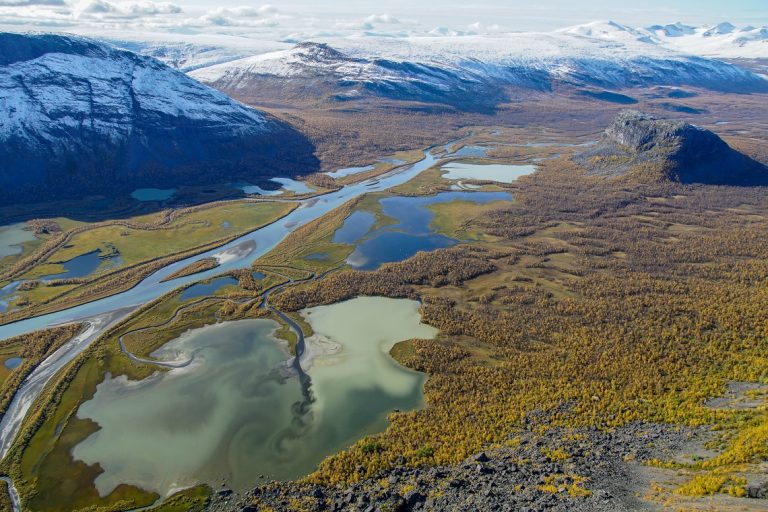North of the ARCTIC CIRCLE lies a land of breathtaking EXTREMES, where its people pay HOMAGE to the seasons and nature PRESIDES over all. This is SWEDISH LAPLAND…
The distant buzz of the helicopter came closer and closer. My empty stomach forgot about its hunger; any thoughts of being stranded quickly flew out of my mind. As the helicopter swooped over my head, I ran through the trees, following the deafening roar from the rotor blades. My mind prepared itself to see another human being for the first time in seven days. After a week of complete solitude, I was relishing the chance to have a conversation with someone besides myself and reindeer.
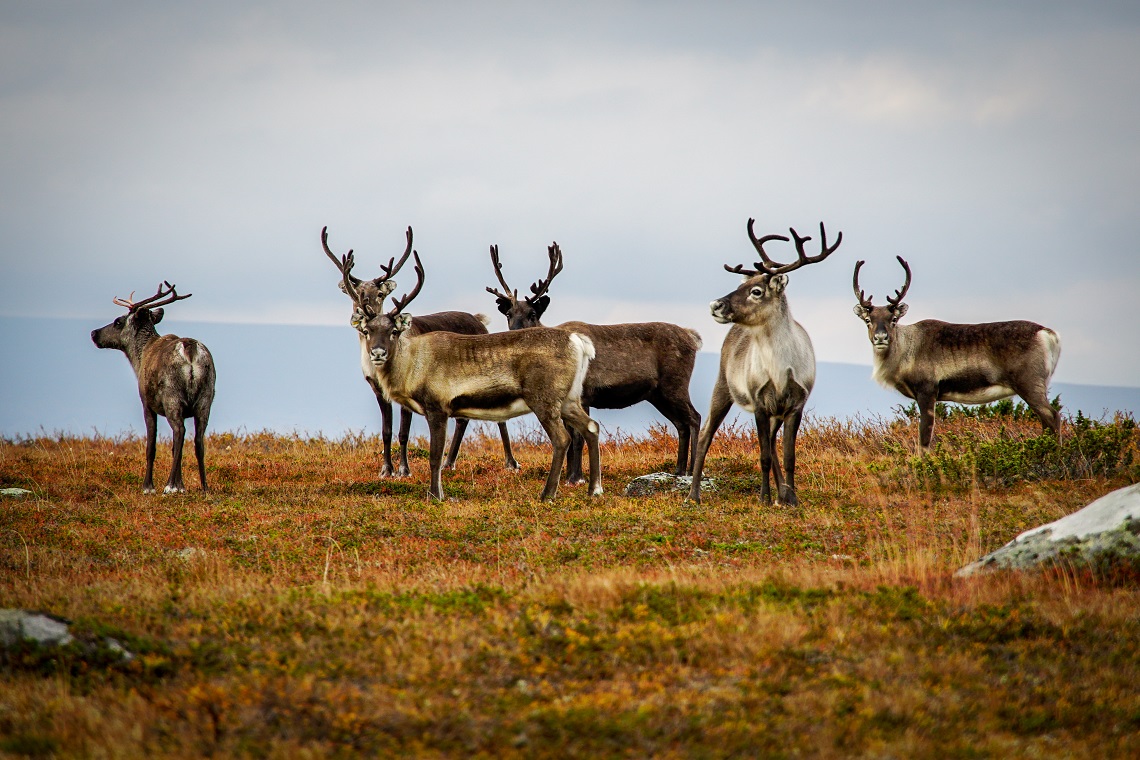
ESCAPE PLAN
After hiking the length of Jordan earlier in the year, I needed another adventure fix. Whereas Jordan was all about the people, culture, and history, this time I wanted true wilderness, wildlife, and connection to nature. Enter Swedish Lapland. Close enough to home not to break the bank, yet remote and wild enough to satisfy my thirst for getting off-grid. After a month of preparation, poring over maps, plotting GPS routes, arranging transport, and getting my gear all sorted, I was ready to make my escape.
My planned 400-mile hike in Swedish Lapland would take me north above the Arctic Circle with a traverse of Sarek National Park, known as Europe’s Last Wilderness. Also boasting the proud accolade of Europe’s oldest National Park, Sarek encompasses 760 square miles of valleys, mountains, glaciers, and high plateaux. There are no trails, no roads, no shelters, no phone reception, and no people. Exactly the kind of solitude I was searching for.
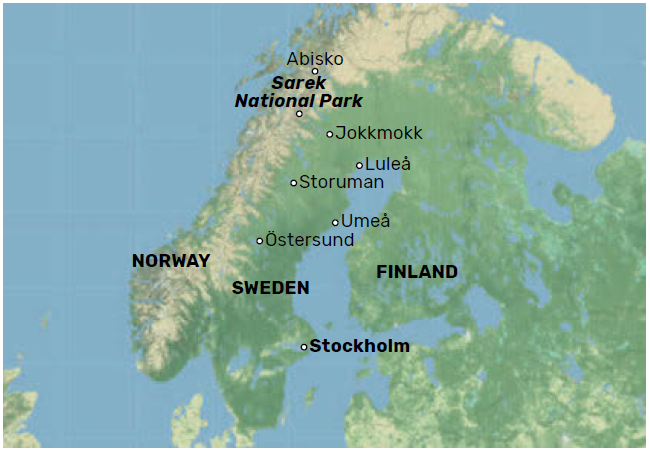
The first chapter of my journey began following the Kungsleden trail, where the miles seemed to fly beneath my feet. Pleasant days winding through birch forests of dark green and silver soon gave way to a land of lakes, with a perfect spot to pitch my tent every few hundred meters. Evenings at camp consisted of brewing lots of tea and thoroughly enjoying trail life. I spent hours simply drinking in the soft bands of orange light from the setting sun as they filtered through the trees, the lakes firing into life as they mirrored the oranges and purples of the sky. The perfect setting for a chilly skinny dip.
Days quickly turned into weeks on the trail and the good weather didn’t last long. I soon found myself trudging through knee-deep bogs in pouring rain, but I was glad it wasn’t summer; I’ve heard the mosquitos are voracious in Lapland. Choosing to hike in September, I was trekking through a change in seasons and bore witness to the full rainbow of colours in the vegetation around me. As I marched north, the dark green hues of the birch leaves began to get lighter, moving into brighter shades of yellow. Autumn was in full swing.
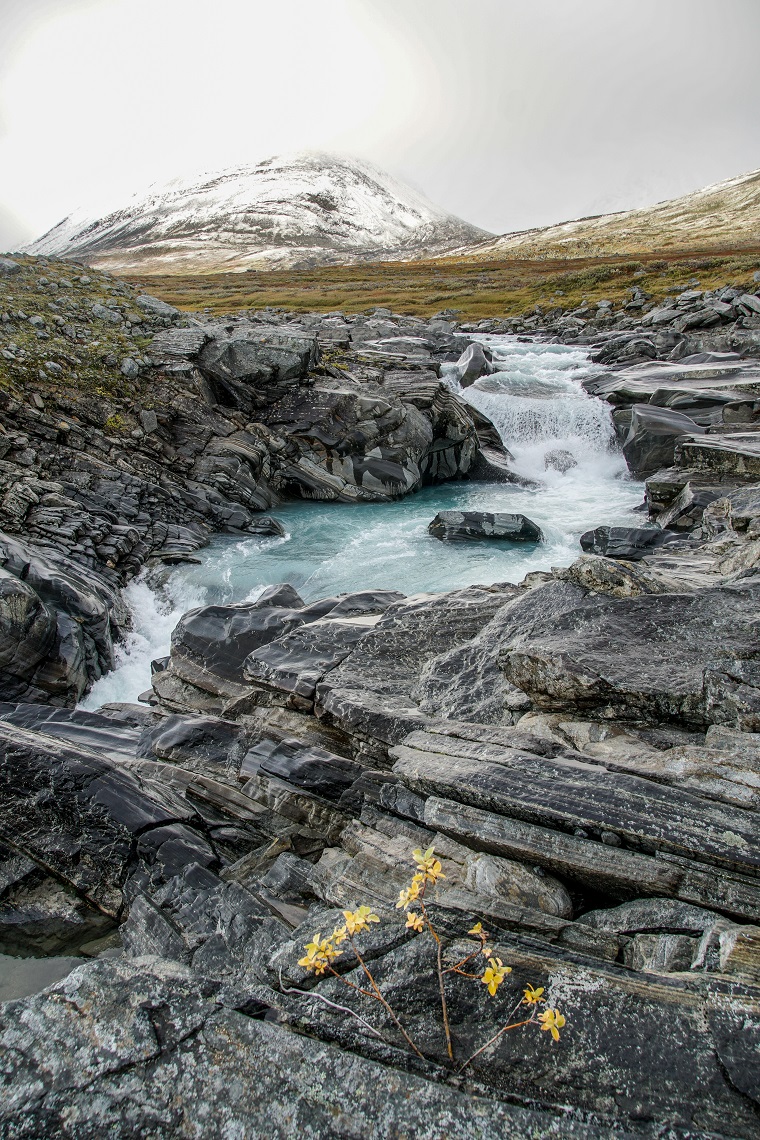
In between the forested valleys and lakes are plateaus of tundra where huge herds of reindeer make their home, sightings of which were a daily pleasure.
This is the land of the Sami, the indigenous people who have lived here for over 8,000 years. The Sami were hunter-gatherers before domesticating the wild reindeer and becoming herders, using them for milk and transport.
At the end of each day, I took the opportunity to do my best grazing reindeer impersonation, crawling on my hands and knees shovelling the abundant blueberries that blanket the ground into my mouth. The supply was endless, and it was hard to stop myself eating even when I was full to the brim. Gone were the nights of the midnight sun as the days got shorter and colder. One morning, I set my alarm for the painfully offensive time of 3 am to catch a display of the Aurora Borealis. In my sleeping bag cocoon, poking my head out of my tent, the night sky was alive with dancing green ribbons and waves above the distant horizon. It felt as though life couldn’t get any better.
TOUGH GOING
Passing through the spectacular Stora Sjöfallets National Park, the larger peaks of Sarek loomed ominously in the distance. I contacted my helicopter pilot while I still had phone reception, to confirm the pickup time and location where I would meet the chopper on the other side of Sarek. This is the only way to get across Akkajaure, a flooded valley with a vast lake that marks the northern barrier of the National Park.
The three days of nearly non-stop rain that followed pushed my mental strength to its limit. I would walk, pitch my tent in the rain, crawl inside, pack up in the rain, repeat. All my gear was wet; my waterproof jacket and gloves saturated with water and about as much use as a chocolate teapot. I was soaked through to the bone and there was little to be cheerful about.
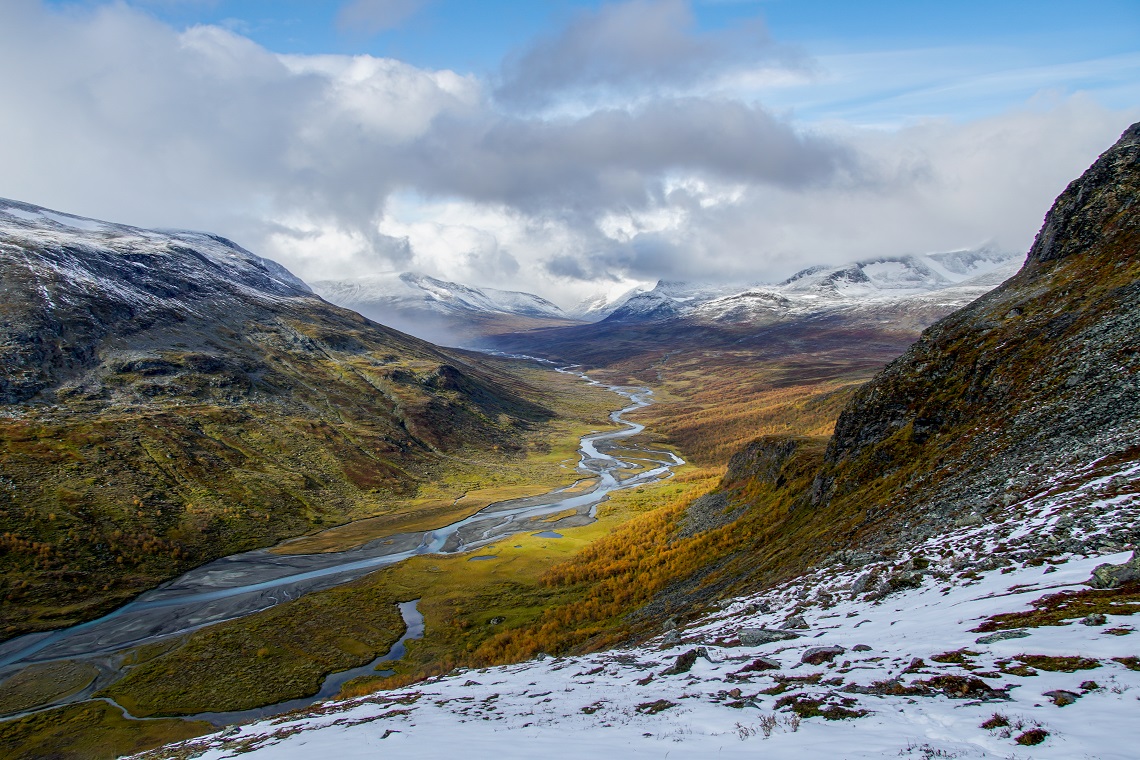
Soon, the temperature dropped and the rain turned to snow. I trudged on, struggling to find my footing among the snow-covered rocks and roots.
I had planned a full food resupply at one of the mountain huts at Aktse, along the Kungsleden trail. But reaching it just a few days before it closed for the season, I found supplies worryingly sparse. All I’d be eating for the next week would be biscuits, chocolate, noodles, and tuna. I entertained the idea that with a bit of rationing it would all be fine. How wrong I was. At this point, I started questioning my decisions.
The combination of soaking-wet gear, temperatures forecast to -10C, and my dire culinary choices were now compounded by the fact I was about to enter a completely remote area with no means of emergency contact. My sensible, calculated side said I wasn’t prepared enough; my never-give-in, don’t-give-up side ultimately won. Alas, what a difference a day can make. As the warm sunshine radiated through my tent, I made the most of it by laying all of my gear out on the ground to dry. My spirits were high, the sunshine burning away any fears or apprehensions.
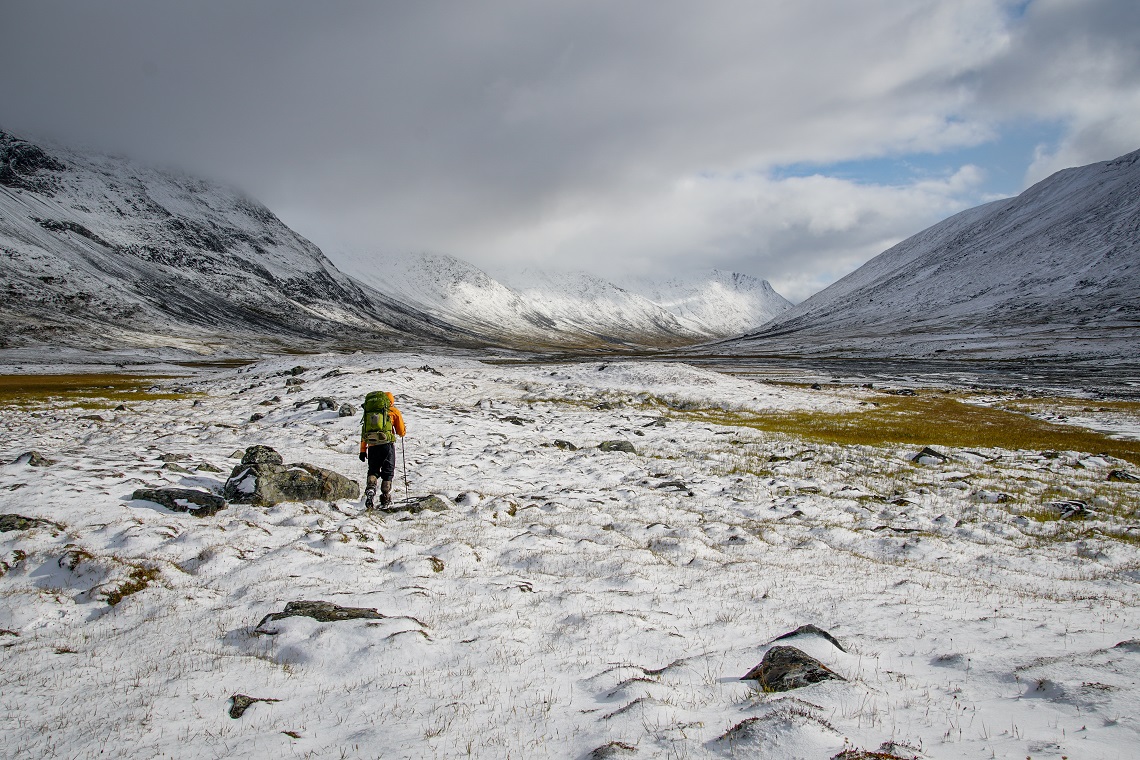
ENTER SAREK
Standing at 1,179m and with a near-vertical face on one side, Mount Skierfe is an imposing presence guarding the entry into Sarek. It screams ‘enter if you dare’ — no wonder it’s a Sami place of worship (Sieidi), where Sami from the entire region gathered to hold religious ceremonies. Below it lies the vast delta of the Rappa river, navigable only by boat. The only way into Sarek is to ascend Skierfe’s flanks. After slogging it to the top I was justly rewarded with one of the best views I’ve ever seen. It’s almost a birds-eye-view to the river delta below, 1,000m straight down.
The braided Rappa river, fed by the meltwater of 30 glaciers, resembled torn pieces of turquoise, green and silver silk, each channel lined with trees, snake their way down through the valley. Clear of the delta below, I descended into the Rappadalen valley.
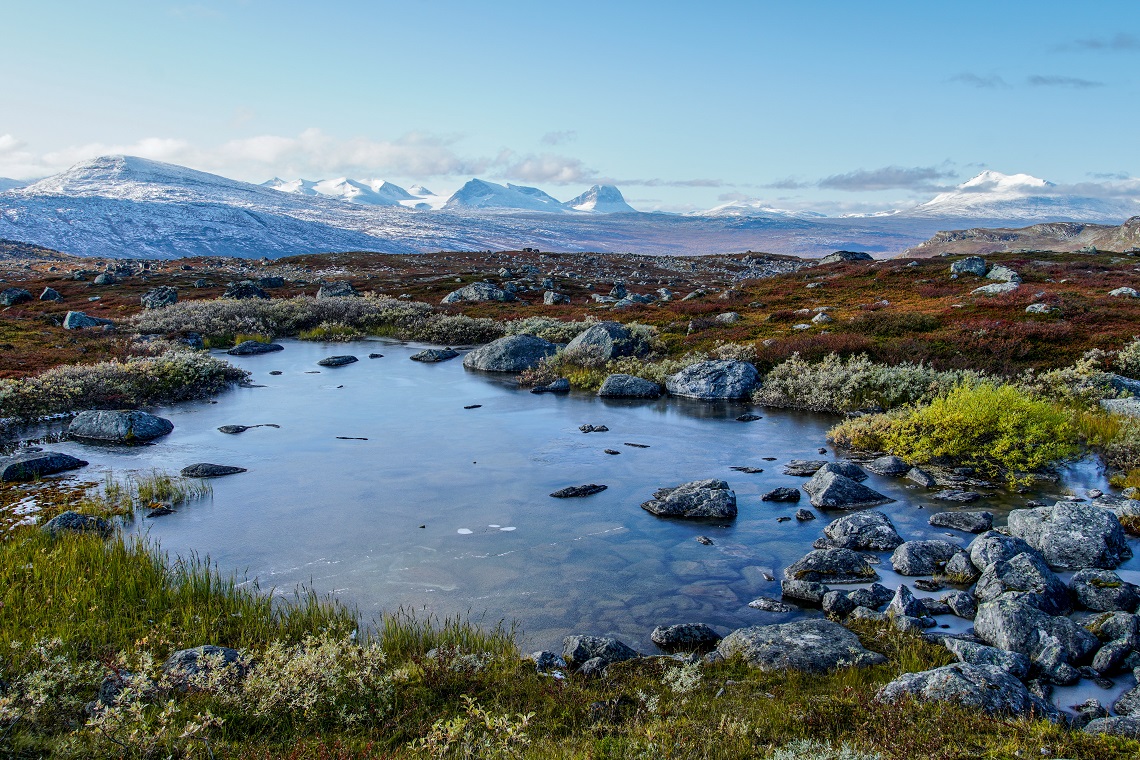
Moving through dense bush and a steep incline, constantly being hit in the face by what seemed like every single branch in the forest. The colours were changing fast now; gone were the mustard yellows and in their place were firey oranges and browns.
Navigation was difficult, bushwhacking through dense dwarf willow and juniper, tantalised by small game trails made by reindeer. Following these however was fruitless and just led me in circles or down to the river. Crashing through the dense bush, I surprise a moose and her calf. They seemed equally surprised to see me, and I stared for a few moments into the mother’s eyes. She saw me as no threat and they both plodded on unfazed. Content with this wildlife encounter, I made camp and started boiling water.
Suddenly, I was joined by an owl, which swooped in and perched on a branch above me. It stayed a while, totally relaxed, and I felt completely in tune with the rhythm of nature — a part of the landscape.
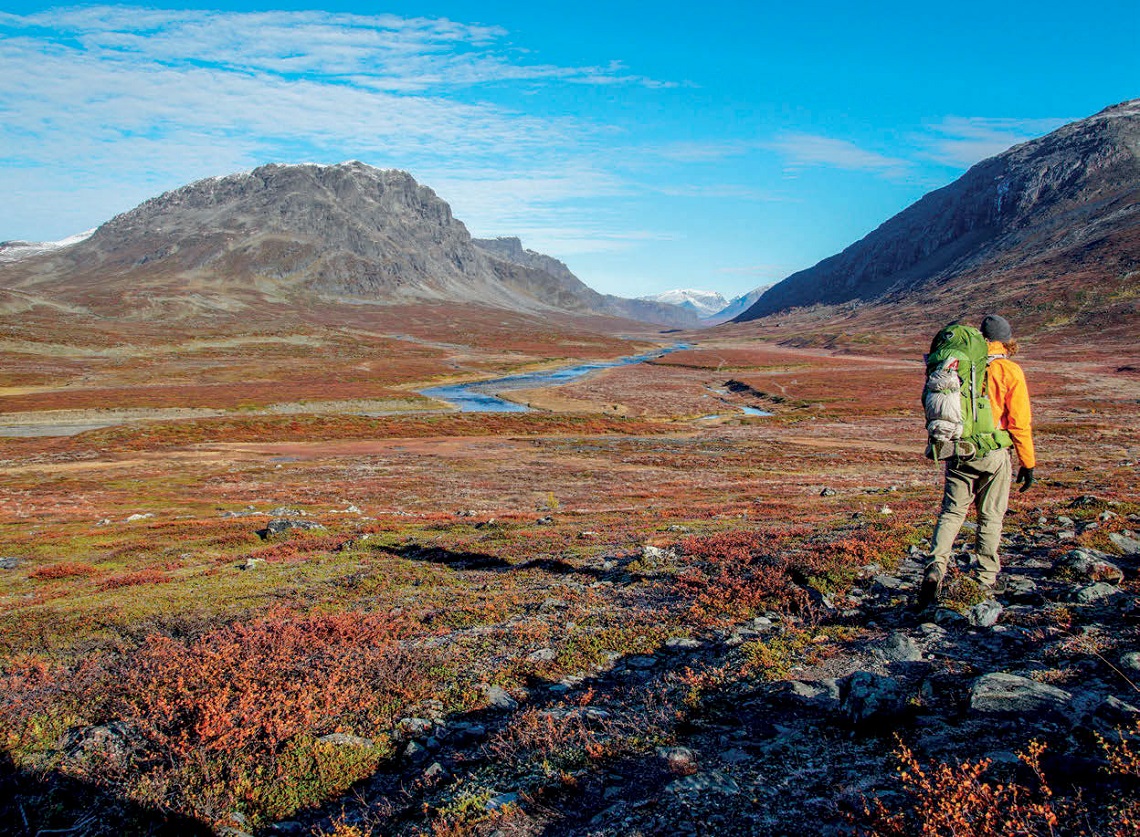
After a few days beating my way up the Rappadalen, I left the trees behind and got higher into the mountains. A thin layer of fog clung to the ground and clouds hung above me. Without any trail to follow, I picked my own route and headed straight up the 45-degree slope. It burned my legs and I was soon pouring with sweat. A herd of reindeer led by a bull with antlers 2m wide ambled up the slope beside me, almost mocking me with the ease and grace with which they made their ascent.
A couple of false summits later, I got over the pass. The snow was up to my knees as I passed two pale blue glacial lakes hemmed in by snowy peaks either side. The landscape had transformed under a layer of snow, skies iron grey and unwelcoming, as I entered a new realm in monochrome. Any extra warmth the autumnal leaves imbued, snatched away on the sharp winds. I took a break to soak in the spectacular panorama of the Rappadalen valley, mother nature providing a 30-minute window before the clouds rolled in and it started snowing again. Winter was here.
Up to this point, a few boggy sections aside, I’d viewed the landscape as inviting and welcoming with its patchwork of coloured tundra, abundance of blueberries to graze on, and picture-perfect places to camp around every corner. Now it was harsh, bleak, frigid, and inhospitable. As my sweat rapidly cooled, it began to dawn on me that I was now completely on my own. I’d found the solitude I’d craved, but maybe rather too recklessly and without any means of emergency communication. But this element of risk added to the overall excitement, I guess.
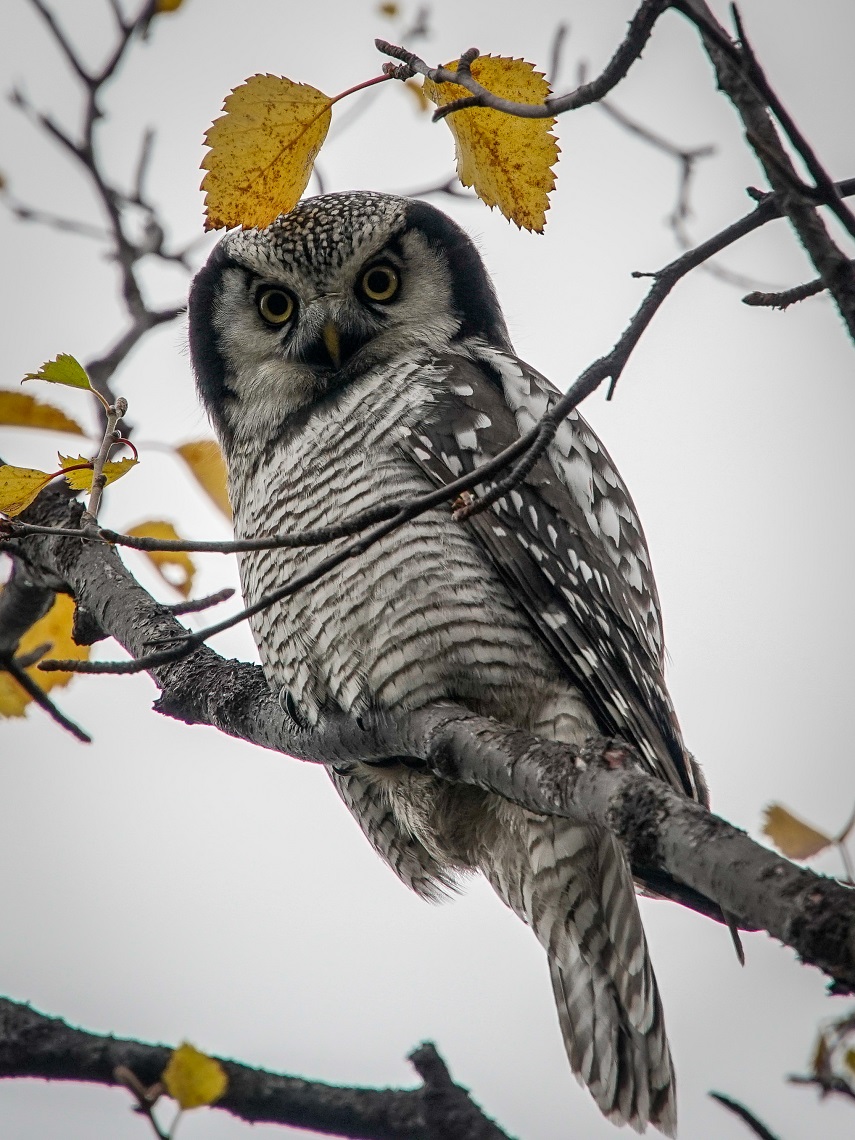
I reached the confluence of the Rappa river where it branches into two wide valleys, a deep-cut gorge with crashing flumes of icy-cold glacial water.
Thankfully this is the location of the only bridge in Sarek, the river impossible to cross by foot. It was nearly dark and snowing heavily so I pitched my tent, but with no shelter in the barren valley, the katabatic winds blew straight into my tent making for an extremely uncomfortable night. I piled on every single piece of clothing I had with me but in my 0C-rated sleeping bag, I barely slept a wink.
By the morning, the snow had stopped but the temperature was – 10C and felt considerably colder with the windchill. My boots and socks were completely frozen. The latter, which had been in a perpetual state of sogginess due to the numerous river crossings of icy glacial water, were now like two pieces of cardboard. It took a mammoth effort to wrestle my boots onto my feet. Once they were on, my toes instantly felt like they were about to fall off.
After half an hour of walking and a lot of expletives, my boots thawed into their usual soggy state. The clouds began to lift and the sun poked its head out, the mountains all around revealing themselves with graceful splendour. But mountain weather is fickle and soon the winds were back, pelting me with hail like a machine gun.
THE OTHER SIDE
Like all masochistic hikers, I enjoy a little bit of pain and discomfort, as it ultimately makes one stronger. Usually, there’s no amount of rain and cold that could dampen my spirit and I’m quite content wading through snow in my shorts. But the icy winds here penetrated right down into my bones. The reality that any kind of warm, dry bed was a six-day walk back the way I’d come marked the lowest point physically and mentally thus far.
I’d never felt so cold, but I just had to grit my teeth and push on. For every low, there is a high, and after a few days of pounding wind and cold, the sun emerged in a cloudless clear sky. The monochrome land I’d been walking through awakened with colour again. The sky was sapphire blue; the glacial rivers and lakes illuminated by the bright sun revealed their aquamarine treasures of which I was the sole witness. My spirits lifted and the walking got easier as I followed the gradient of a river gradually down the valley.
With the wind gone, the air was silent and still… Then I noticed the constant hum in my ears. I looked around expecting to see a prop plane, then I remembered Sarek is a no-fly zone. Maybe I was going a little crazy? My food was running low by this point. A few packets of noodles and biscuits were all I had left. With no blueberries up at my current elevation to keep me going, I had to fight the urge to gobble everything up in one go.
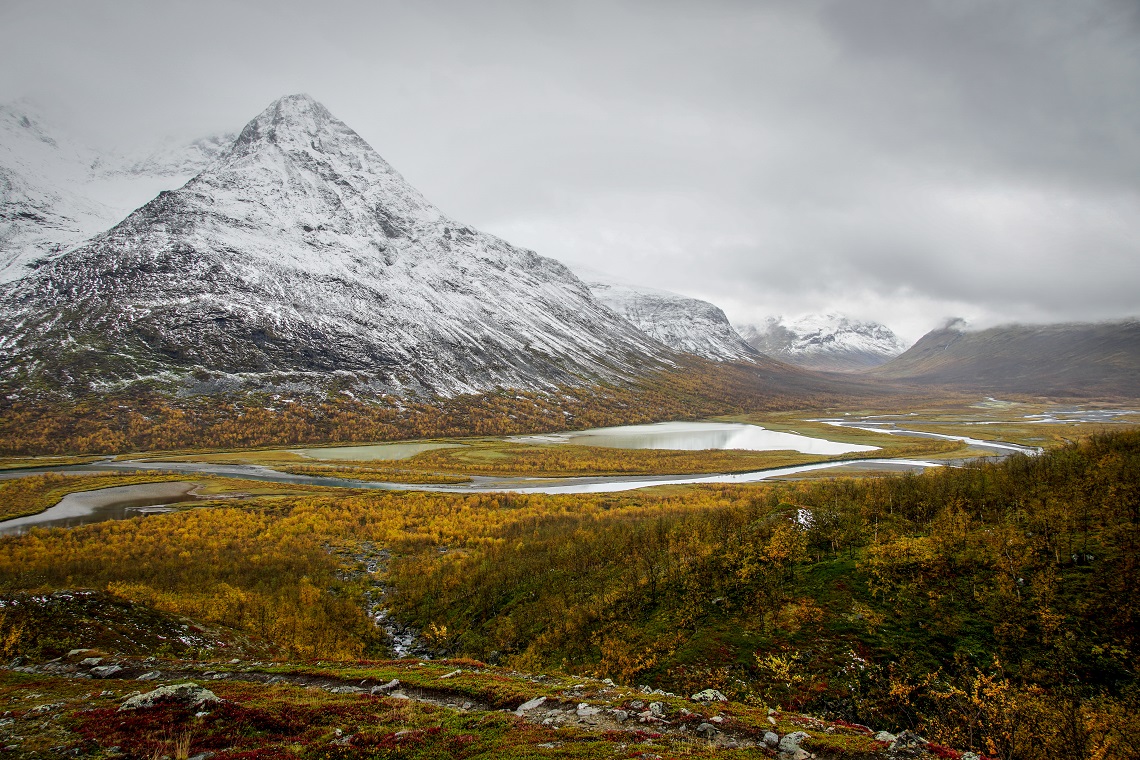
Just as Mount Skierfe guarded the entrance into Sarek, The Akka massif is garrisoned at the exit. I was happy to see the foot of its slopes forested in orange birch trees after the frigid valleys and peaks I’d left behind. Walking again among the trees gave me a feeling of security and safety. Winter had passed back into autumn, with the calm breeze rustling through the trees, lifting leaves gently into the air and onto the mossy forest floor. I spent one more glorious day walking through the forest, now a wonderland in a kaleidoscope of colours, before reaching my helicopter pick-up location with four hours to spare. This was a lift I definitely did not want to miss; my life literally depended on it as the only other alternative was a seven-day walk without food to the nearest mountain hut.
I made a coffee and watched the sun, accompanied by a herd of 20 reindeer, which seemed completely unfazed by my presence. The sound of the approaching helicopter felt alien after a week of nothing but water and wind in my ears. It’s only a 10-minute ride to cross Akkajaure but seeing a road and buildings from above made the wilderness of Sarek already seem so far away.
On reaching Ritsem, I bought nearly every food item the village shop had and took a well-deserved day’s break to recuperate. My journey was nearing completion. I headed back onto the Kungsleden and it felt like a breeze walking on an actual trail once again. Before I reach my endpoint at Abisko, Swedish Lapland had one more treat to offer me – a fleeting encounter with a brown bear cub. The cute ball of fluff disappeared as quickly as it appeared, bounding away into the trees. No doubt to tell its mama about the strange hairy creature it just saw.
I was filled with mixed emotions as I walked my last few miles. Part of me wanted to just keep going, and another was looking forward to the comforts that returning to civilisation would bring… like pizza and beer, mostly. As I reached Abisko and dropped my bag from my shoulders, a wave of pride poured over me as I reflected on the trials and tribulations of the last month. I set out for wilderness, nature, and solitude. And Swedish Lapland delivered in abundance.
Who’s Writing?
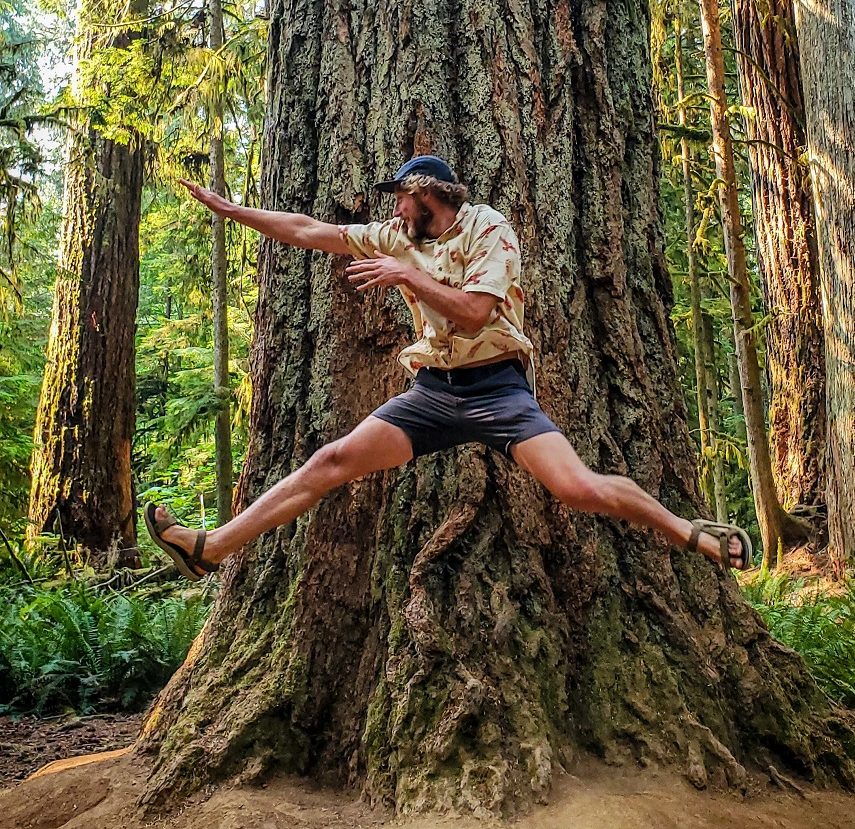 Albert is an adventurer, photographer, and traveller, whose love for nature and the outdoors sees him more at home on the trail than in a real bed. He has walked the length of New Zealand, Jordan, and Mauritanian Sahara with many more miles planned for the future. You can follow what he gets up to on Instagram @albertpomeroy
Albert is an adventurer, photographer, and traveller, whose love for nature and the outdoors sees him more at home on the trail than in a real bed. He has walked the length of New Zealand, Jordan, and Mauritanian Sahara with many more miles planned for the future. You can follow what he gets up to on Instagram @albertpomeroy


